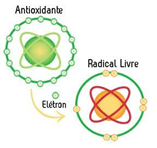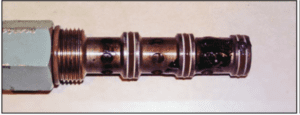
Marcos Thadeu Lobo
Mechanical Engineer Graduated from the State University of Campinas (Unicamp). He currently works as an Associate Consultant at QU4TTUOR CONSULTORIA.
Ruler test
Aromatic and phenolic amines are primary antioxidants that make up the formulation of lubricating oils used in many industrial applications and in hydraulic turbines, driven by steam and fueled by Compressed Natural Gas (CNG) with zinc-free additives.
By measuring the depletion rate of antioxidant compounds, together with some other physicochemical analyses, it is possible to monitor quite reliably the service condition of the lubricating oil in use.
 Image 1 – Turbine powered by Compressed Natural Gas (CNG)
Image 1 – Turbine powered by Compressed Natural Gas (CNG)
The Ruler Test (Remaining Useful Life Evaluation Routine by Linear Sweep Voltammetry – LSV) measures the content of aromatic and phenolic antioxidant amines by quantitatively analyzing the relative concentrations of antioxidants in new and used lubricating oils in order to reliably monitor the rate of depletion of the antioxidant additive package in the lubricating oil charge.
Images 2/3 – Switchgear for the RULER Test
Antioxidant additives are added to lubricating oils in order to protect them against the phenomenon of oxidation. Antioxidant molecules protect the lubricating oil by chemically reacting with molecules that contain free radicals and, if not neutralized, will lead to the formation of sludge and varnish deposits.
Images 4/5 – Slow down the oxidation process: the role of antioxidants
The Ruler Test uses LSV (Linear Sweep Voltammetry – LSV) technology to monitor antioxidant additives, extracting them from the lubricating oil sample and diluting them in a specific chemical solution. After this action, an increasing electrical voltage for a specified time is passed through a properly prepared sample.
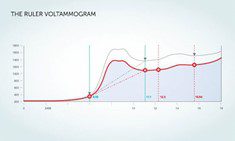
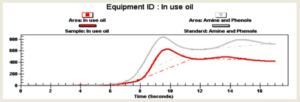 Images 6/7 – Examples of voltagrams obtained in RULER Test
Images 6/7 – Examples of voltagrams obtained in RULER Test
The antioxidant chemical compounds will accept electrons at certain electrical voltage ranges producing peaks in the voltage graph produced by the equipment used in the Ruler Test. The areas between the peaks of the lubricating oil in use are compared with the areas located between the peaks produced for the lubricating oil that is not used, in order to calculate the percentage of antioxidant chemical compounds (eg, aromatic and phenolic amines; phenols) remnants.
The level of antioxidant chemical compounds, also present in the lubricating oil in use, will give an indication of the lubricating oil’s ability to resist the phenomenon of oxidation and the consequent formation of deposits in the form of sludges and varnishes in applications such as:
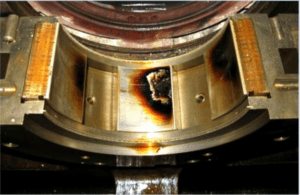
 Images 8/9 – Ruler Test: tool for monitoring sludges and varnishes
Images 8/9 – Ruler Test: tool for monitoring sludges and varnishes
- Hydraulic turbines.
- Steam powered turbo-generators.
- Turbo-generators of electrical energy powered by Compressed Natural Gas (CNG) with zinc-free antioxidant and anti-wear additives.
- Hydraulic systems with zinc-free anti-wear and anti-wear additivation.
Images 10/11 – Ruler Test: hydraulic and steam driven turbines
Regular monitoring of the depletion rate of the antioxidant additive makes it possible to assess the Remaining Lifetime of the lubricating oil charge in use, enabling adequate planning of its replacement, when necessary, with greater reliability and providing maintenance staff with a valuable additional tool when taking of decisions.

 Images 12/13 – Ruler Test: valuable tool in decision making
Images 12/13 – Ruler Test: valuable tool in decision making
In summary, it can be said that the Ruler Test is a test that, applied together with other physicochemical tests (e.g. AN; MPC; FTIR; RPVOT), will be very useful in monitoring the Remaining Lifetime of the antioxidant package and the service condition of lubricating oils used in turbines and hydraulic systems, turbines driven by steam and powered by Compressed Natural Gas (CNG).
The Ruler Test has been increasingly used by lubricant oil analysis laboratories to aid their customers’ planning and decision-making, in view of the high costs involved in the unavailability of machinery and unscheduled interventions.
 Image 14 – Machinery availability: maintenance staff objective
Image 14 – Machinery availability: maintenance staff objective






